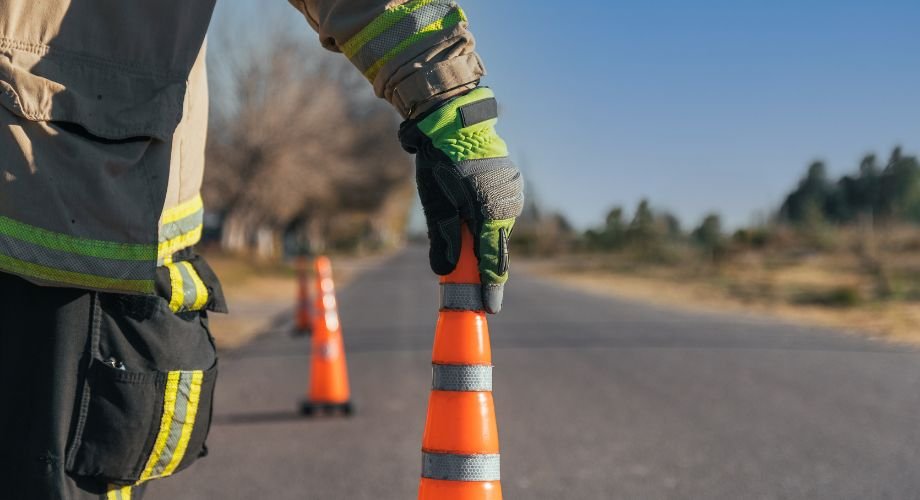Common Traffic Control Mistakes and How to Avoid Them
Good traffic control keeps things moving and people safe. But one small mistake can cause delays, confusion, or even accidents. If you're part of a traffic control company, avoiding these errors is a must.
This blog breaks down the most common mistakes and shows you how to steer clear of them. No fluff—just real talk, simple fixes, and useful tips you can put to work straight away.
1. Poor Planning and Risk Checks
The Mistake
Rushing into a job without a full plan often leads to trouble. Many crews forget to check road layout, traffic flow, or possible risks. This can cause traffic jams or even accidents.
How to Fix It
Plan the setup before going on site. Think about peak traffic times, weather, local rules, and emergency access. A clear plan helps avoid last-minute changes.
2. Wrong or Missing Signs
The Mistake
Using signs that are too small, hard to read, or placed in the wrong spot can confuse drivers. Missing signs are even worse.
How to Fix It
Use standard signs that follow road laws. Make sure drivers can see them in good time. Signs should work well in day or night and in poor weather. A traffic safety company will always check signs before work begins.
3. Not Enough Trained Staff
The Mistake
Untrained workers might not know how to handle changes on site. They may also struggle with upset drivers or unclear setups.
How to Fix It
Train your crew well. Make sure they understand safe setups, radio use, and how to spot risks. Training should be up to date. Even short refreshers can help. When the crew knows what to do, the job runs better.
4. No Safe Routes for Pedestrians
The Mistake
Some plans forget that people walk too. If there’s no safe path, people might walk into live traffic or climb barriers.
How to Fix It
Always give pedestrians a safe route. Use barriers to guide them and stop them walking into danger. Add signs to show where to go. Keep routes wide enough for wheelchairs and prams. Never block crossings without a safe option nearby.
5. Poor Team Communication
The Mistake
If team members can’t speak with each other, mistakes happen fast. One worker might move a cone while another doesn’t know. This causes gaps or unsafe areas.
How to Fix It
Use radios or clear hand signals. Agree on a plan before work starts. Keep everyone in the loop if something changes. Good communication helps stop small problems from becoming big ones.
6. No On-Site Adjustments
The Mistake
Traffic changes through the day. Some teams stick to the original setup even when the site needs a change.
How to Fix It
Watch the flow of traffic and people. If it builds up, adjust signs or barriers. If weather changes, update the site.
7. Skipping Equipment Checks
The Mistake
Old cones, faded signs, or broken lights can ruin the setup. They also make the site look messy or unsafe.
How to Fix It
Check all gear before use. Replace anything damaged or unclear. Have spares in the van just in case. A good site looks clean and sharp, which builds trust with the public.
8. Ignoring Rules and Permits
The Mistake
Skipping permits or not following legal setups can cause big fines or site shutdowns. It’s also unsafe.
How to Fix It
Know what rules apply where you’re working. This includes times you’re allowed to work, how many signs you need, and who to inform. Ask your local council if you're unsure.
9. Weak Driver Guidance
The Mistake
Drivers often get annoyed if signs aren’t clear. If they don’t know where to go, they might drive the wrong way or take risks.
How to Fix It
Give drivers enough notice to slow down and choose the right lane. Use flaggers when needed. If you close a road, show a clear detour route. Keep signs big, bold, and easy to read. The less confused drivers are, the safer the site.
10. Relying Only on Tech
The Mistake
Digital signs and traffic apps are useful, but they can fail. If they do, there might be no backup.
How to Fix It
Use tech, but don’t depend on it fully. Have printed signs, cones, and staff ready to take over if something stops working. If you use a traffic update app, check it’s working throughout the day.
11. Not Planning for Emergencies
The Mistake
Many teams forget to plan what to do if something goes wrong. If there’s a crash or a medical emergency, the team may panic or freeze.
How to Fix It
Talk through possible risks with your team before starting. Have a basic plan for emergencies. Make sure someone has a phone and knows who to call. Simple plans save lives.
12. Overcrowded Work Zones
The Mistake
Too many people or vehicles in a small space makes the site hard to manage. It also puts workers at risk.
How to Fix It
Limit the number of people on site. Space out gear and vehicles. Make sure workers stay inside the safe zone. If the site gets crowded, pause and clear space before moving forward.
Final Thoughts
Traffic control is not just about cones and signs. It's about keeping people safe and making sure roads run well during works or events. Avoiding mistakes means being alert, trained, and ready to adapt.
At Enfort Security Management Pte Ltd, we focus on delivering safe, reliable, and well-planned traffic solutions. Our trained teams work with the highest standards to make sure projects run smoothly while keeping the public safe. With us, you get more than just traffic control you get peace of mind.

